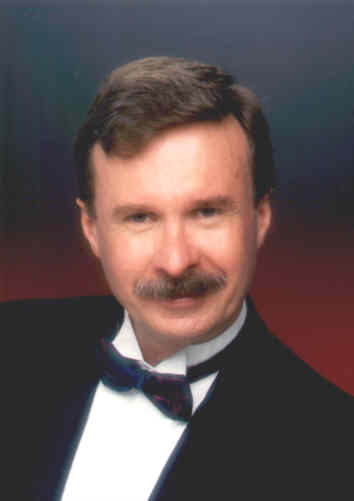 A Consultant's Casebook
A Consultant's Casebook
about me: Andres Inn, Ph.D.
|
|


|
"So what?" I've often heard. "Professional development is what it's about." When they can't answer critiques, Assessment Center proponents drag out the argument that their technology is important for training. Candidates who simply participate in the process are sure to become better leaders, managers, subordinates, colleagues, whatever. And, since it's so hard to substantiate the behavioral aspects, let's just ask people whether they think the experience was useful, valuable, and enjoyable. Positive feelings are correlated. When I meet a beautiful woman, I frequently attribute above average intelligence to her also. The subjects I enjoyed at school are also those I (then) regarded as useful. So when participants enjoy their experiences in an Assessment Center, it is likely that their positive regard will generate positive ratings for useful, valid, predictive, growth promoting, whatever. As for enjoying the experience of an Assessment Center, this is an outcome that can be socially engineered. Therapy groups, sensitivity groups, religious retreats, training groups, substance abuse support groups, and assessment centers all share a basic technology that practically assures that the experience will be received positively. A Not Altogether Negative ExperienceI do my best work during the very early daylight hours, or the late evenings, when my computers don't need to compete for my attention. It was about 11:00 in the evening, when one of my graduate students, Stan Kirk, drove by my office at Southern Methodist University and noticed that my light was on. He had been teaching me pool, and decided that it was too late for work, but just the right time for a beer and a game. We had about $10.00 between us and headed for "The Cave." It was too crowded, and we moved on to the "Inner Circle Bar" at a strip mall right off the North-South Interstate. We were in the middle of our second or third game and I was hunched over the table with the cue stick in my hand. When I looked up at Stan, I saw him grinning, both hands held high; a cigarette in one, and his beer in the other. Confused, I looked around behind me and saw two men with ski masks; one brandishing a shotgun, the other an automatic rifle. It was like a familiar movie: "This is a stick-up," one shouted! "Everyone in the corner!" I'm no fool. I know that a wall of bodies will stop a rifle bullet, and a shotgun blast will penetrate less. I was the first in the corner. "If I can't see your hands, I'll start shooting." "Oh-oh!" I'm cursed with being only 5'8", and I wasn't wearing cowboy boots with heels. I raised up on my tiptoes, waving my arms in the air - pretty much in a panic. As the robbers were rifling the cash register at the bar, I heard sirens. A moment later there was a pounding at the door. "Open up, this is the poh-liis!" As it turned out, the dry-cleaner next door was working late, and heard the commotion in the bar. He telephoned the police, and the police arrived aggressively, and in force. The 25-30 of us were instant hostages. As the night dragged into morning we were threatened, slapped around, mildly tortured (we were not allowed to visit the washroom to return our borrowed beer), and alternately treated with some civility. Between bouts of standing in the corner, or against the wall, we were treated to quarters and allowed to play pool, pee in the trash can, and some of our group chose to drink free beer. Stan and I decided to forego the beer and conferred as to which pool table to dive under when the police broke in and shooting began. By morning I found myself talking to the two lunatics who had broken out of a Texas reform school. I even liked them, knowing full well about the "Stockholm" syndrome and Bruno Bettelheim's descriptions of Jewish concentration camp victims who identified with their captors. The "Stockholm syndrome" refers to the bond that sometimes develops between captor and captive. The case of a woman hostage held at a bank in Stockholm provides the label. She became so emotionally attached to one of her captors that she broke her engagement to another man, and remained faithful to her former captor during his prison term. And, to this day, I remember the experience at the Inner Circle Bar, not with terror, but as a humorous, exciting, and even interesting event in my life. The point is, that social scientists have described a perfect recipe for creating situations that participants find interesting, likable, useful, nurturing, self-actualizing, sociable, whatever. Mix together in an unfamiliar environment::
This recipe always works to produce positive affect. It works in Therapy Groups, Training Groups, Sensitivity Groups, Substance Abuse Support Groups such as AA, and Assessment Center exercises. Place participants into an unfamiliar environment with unclear rules. Create stress by making people perform in an unfamiliar ways (describe deep feelings, emotions, pain, personal and family relationships, grovel and negotiate with thugs, whatever). Relieve the stress by accepting each participant's unique reaction to the experience. Voila! You have created instant liking for the group experience. Circumstances much like these cemented the relationships among Reverend Moon's "Moonies," the Hari Krishnas, the inhabitants of Jamestown, French Guiana and the Branch Davidians near Waco, Texas. People find all kinds of social experiences likable, but that doesn't make them useful.
|
All material is copyrighted! Not to be used without the written permission of Andres Inn. ©2000.
Send mail to Andres.Inn@mail.ee with questions or comments about this web site.
|